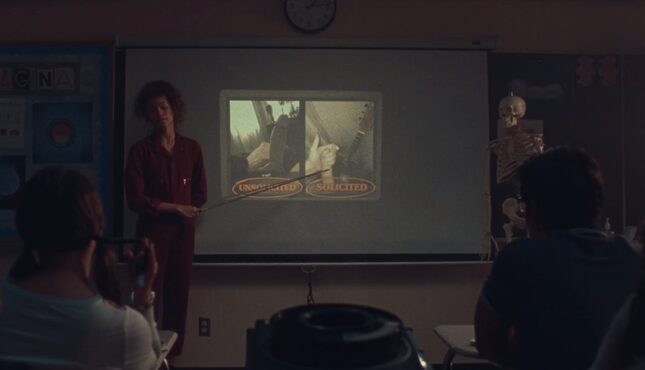Yay for Penises, But What About the Shadowy, Merkin-Covered Pop Culture Vulva?
These cameos tend to inspire a combination of gawking, locker room humor, and homophobic revulsion.
EntertainmentTV
Illustration: Jim Cooke
When HBO’s Euphoria premiered its 40 seconds of approximately 30 dicks in Episode 2, the world seemed to get a collective boner about it. From journalists to random people on Twitter, there was endless, inescapable talk of dicks, dicks, dicks. It was the sheer volume of peen, yes, but also the fact that it still feels novel to see a dick, let alone many dicks, in mainstream TV and movies. That is despite the fact that, according to some, it’s been on the rise in recent years. (Last night’s Euphoria episode featured yet another montage of dicks, including a micropenis.) These cameos tend to inspire a combination of gawking, locker room humor, and homophobic revulsion, but there’s also, unmistakably, sheer giddiness around the supposed re-balancing of Hollywood’s nudity scales. There’s the sense of finally, men are getting naked, too.
It was amid this recent dick-phoria that a friend alerted me to a Twitter account that was dedicatedly @-mentioning journalists who wrote favorably about penises in mainstream film and TV. That account led me down a rabbit hole to a handful of similar accounts, which used hashtags like #FreeTheV and #TIMETOSHOWVAGINALIP, and expressed outrage at the Euphoria frenzy due to “utterly fucking disgusting double standards” around on-screen nudity. In this version of reality, it was men who were routinely sexually objectified on screen. As one of these accounts, @Alexluvspussy, put it: “Name the shows and movies that show pussy. I could name hundreds that show male genitals. … Male objectification is more wide spread than female and males are shown full frontal, in pornographic ways women are not.” (He was responding to a woman who tweeted, “Euphoria treats a penis the way every single other hbo show treats every inch of a woman’s body and I’m here for it.”)

I hate to say that a Twitter account with six followers and a tendency toward hyperbole about “hypocritical” feminists, despicable “modern women,” and leftist “agendas” got me thinking, but it got me thinking. It got me thinking about the many manifestations of men’s entitlement—and that I couldn’t recall having ever seen a vulva in a mainstream TV show or movie, although I could tell you about some dicks.
just how common are visible vulvas in mainstream entertainment?
As TV and film viewers, we have all in our lifetimes seen more instances of on-screen breasts than we could ever possibly remember or count. Below the belt, though, I could only remember fleeting, shadowy glimpses of women’s pubic hair. Certainly nothing like the vivid closeups on flopping dicks and dangling testicles in the Euphoria scene, which creator Sam Levinson describes as an homage to 1976’s Carrie. In that original scene, a few young women walk around naked with full bush on display, but there are, most definitely, no clitoral or labial close-ups. So just how common are visible vulvas in mainstream entertainment?
-

-

-

-

-

-

-

-

-

-

-

-

-

-

-

-

-

-

-

-

-

-

-

-

-

-

-

-

-

-

-

-

-

-

-

-

-

-

-

-








































